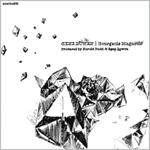|
|
 |
Dusted Reviews
Artist: Gene Bowen Album: Bourgeois Magnetic Label: Amorfon Review date: Nov. 12, 2007 |

|
|
|
 |
Gene (Eugene) Bowen’s sparse discography offers evidence of an intriguing musician/composer working a seam between beatific West Coast art music minimalism and the folk/pop vernacular. Bourgeois Magnetic originally appeared in 1981 on the short-lived Cantil label, co-created by Bowen and composer Harold Budd, and the just-under-19 minutes of music reissued here dovetail elegantly with other Cantil titles from the era: Budd’s Abandoned Cities and The Serpent (In Quicksilver).
Indeed, the first sounds we hear on Bourgeois Magnetic are those of Budd’s piano. To describe Budd’s sound as gem-like has become a cliché, but given that this piece is entitled “Tourmaline” we can perhaps let the description stand. (Besides, Bowen himself has stated in a recent interview that he intended the opening and closing selections of this record to be heard as “settings” for the pieces in between.)
The record goes on to cover a lot of ground in its short playing time. “Desert’s Edge” is a work of otherworldly crystalline beauty, with carefully – and radically – filtered synth textures suggesting a soundscape alive with wind in wires, sounding stones and mysterious resonances. The title track exerts a gentle gravity on the entire record. It’s a hypnotic piece of art-pop built from berimbau, percussion and electric bass groove, adding swelling string synth textures and catchy, hooky, multi-tracked vocals from Bowen. The lyrics combine dada, absurdism, history, psycho-babble and bits of eastern religion, yet it’s almost magical just how light and engaging this piece sounds despite the layering and staggering of so many parts. Bowen delivers his vocals with sincerity and transparency, eschewing the squawking irony and emotional coolness that David Byrne and Brian Eno were bringing to similar musical constructions during the era. As a result, this strange little song comes off as a lovely amalgam of Eno’s Before and After Science and, say, Schoolhouse Rocks.
There are more instrumentals – with Budd’s piano foremost, treated with various amounts of echo and delay, distance and intimacy – and the EP unfolds nicely, with Bowen’s command of texture and integrity of aesthetic leading to a musical experience that sounds fresh and fascinating a quarter century after its near disappearance.
By Kevin Macneil Brown
|







